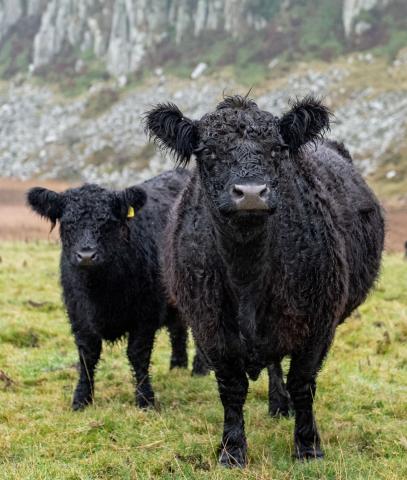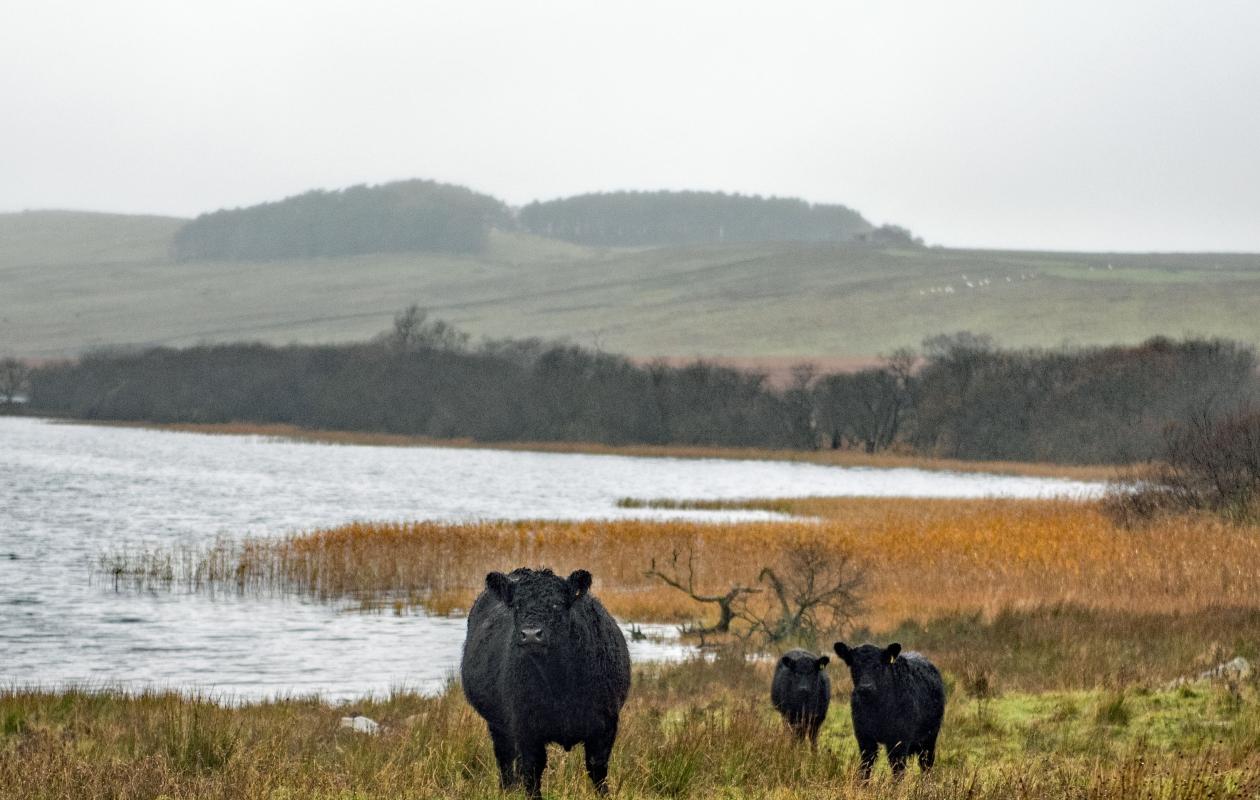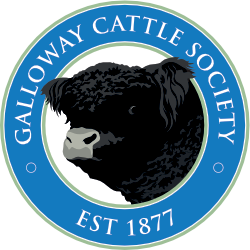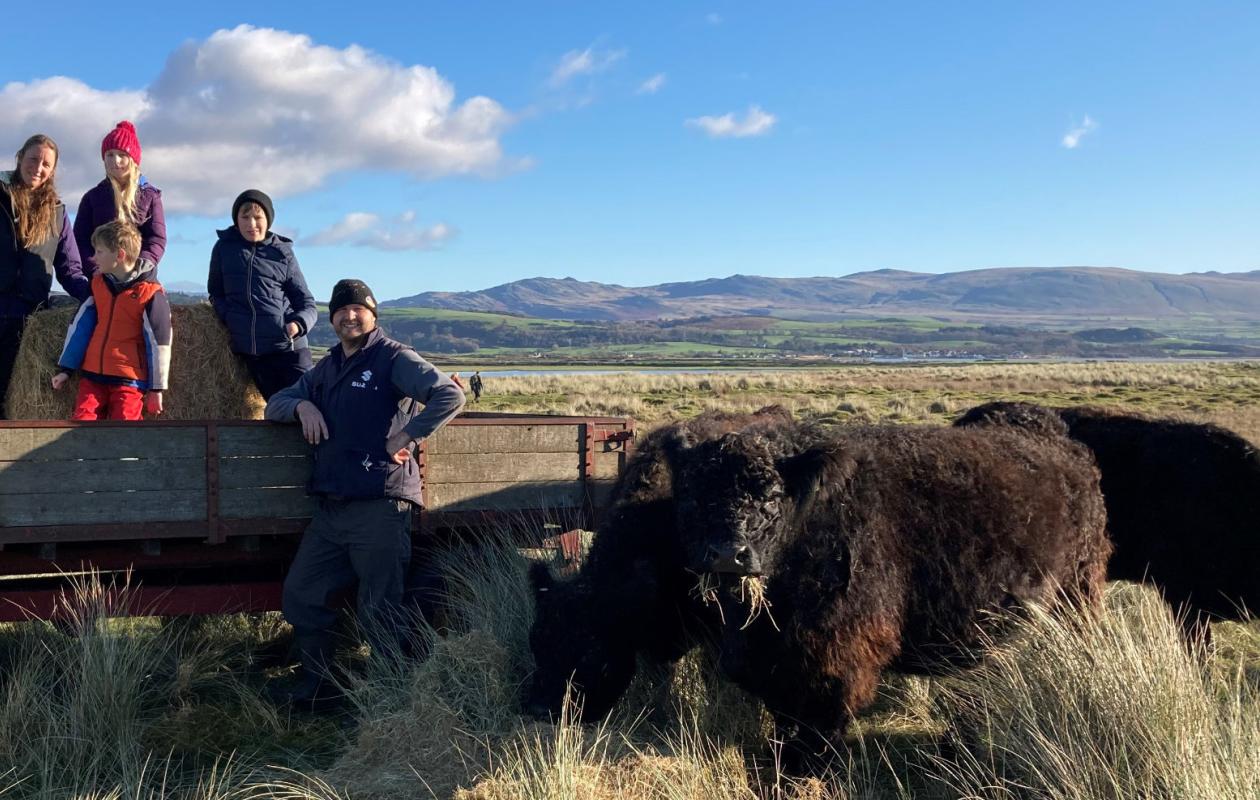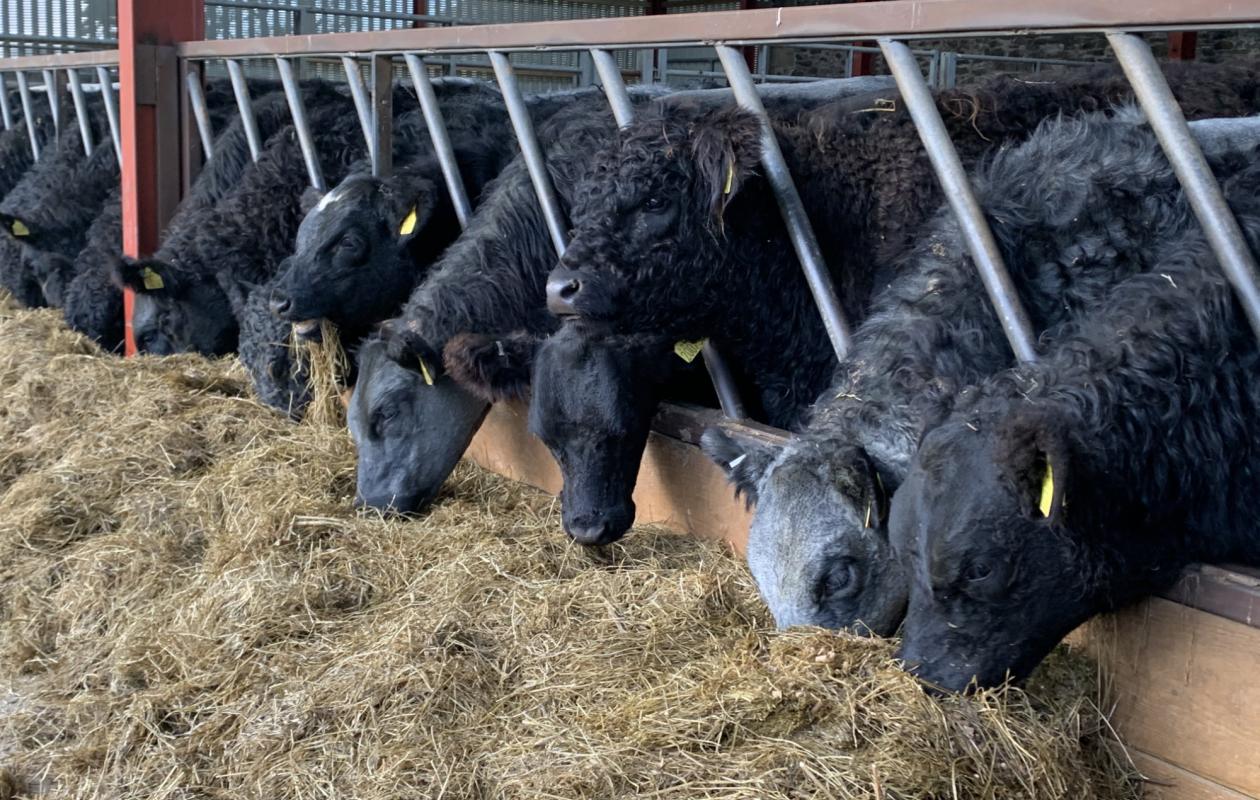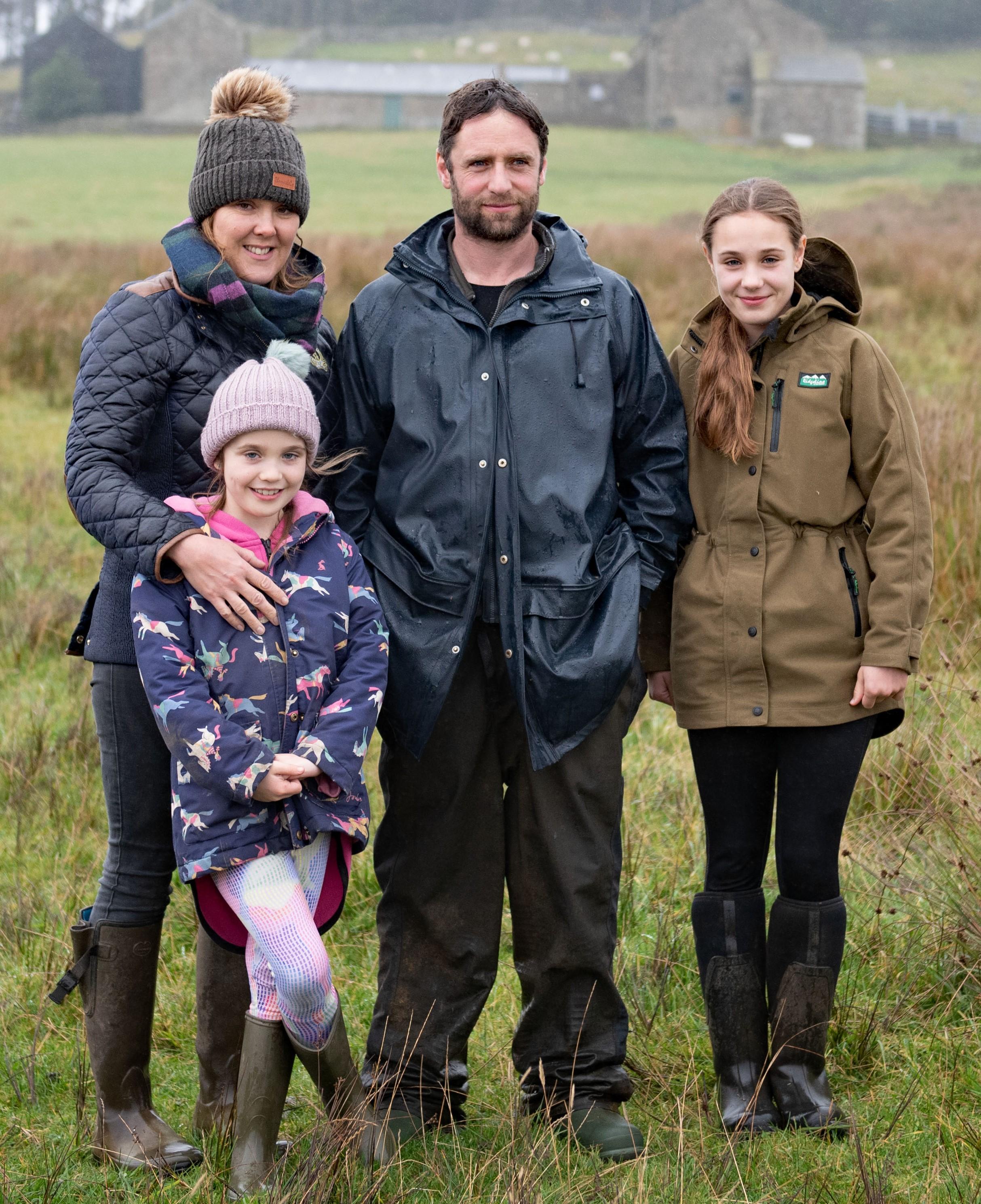
Pattinson Family - Hotbank
Low-input, sustainable Galloway cattle have been the backbone of the livestock system at Hotbank Farm, near Bardon Mill in Northumberland for almost 100 years.
They remain the breed of choice for the third generation of the Pattinson family to farm the severely disadvantaged, all-grass land which straddles Hadrian’s Wall, a World Heritage site.
The pedigree outwintered Galloways, run alongside registered Whitebred Shorthorns and North of England type Blackface sheep, tick all the boxes for the Pattinsons - tenant John, his wife Pamela and their son Jonjo and his wife Anna who farm 1,500 acres owned by the National Trust.
With very limited winter housing, Jonjo and Anna, helped by their daughters Claudia, 17, Libby, 14, and Charlotte, eight, continue the family cattle tradition which helps them farm in compliance with many organisations on the severely disadvantaged land, including the Northumberland National Park, English Heritage and Natural England.
The land, which includes grass parks, was originally three holdings which stretches for three miles and is half a mile wide. All the land is in Countryside Stewardship and a SSSI with the exception of one field.
The landscape features include the Roman Wall escarpment and the catchment areas of Crag Lough at Hotbank, closest to Hadrian’s Wall, Broomlee Lough and Greenlee Lough.
Galloways and Whitebred Shorthorns are ideal conservation grazers, thriving on poor quality grazing with no nitrogen inputs, even on the ground for hay.
The cattle have been bred at Hotbank since Jonjo’s grandfather, Joseph first moved to the farm in 1934 and while other breeds have been tried, the traditional cattle are found to be the ideal for the farm, the environment and the family.
“These cattle are the breeds of choice for me on this farm,” said Jonjo. “My dad tried every breed to cross with the Blue Grey females. Now the Blue Grey herd has dwindled and we no longer keep them in the herd, concentrating on the registered cattle,” he added.
Native cows like the Whitebred and the Galloway are smaller and lighter in weight than continental breeds causing less damage to areas of rough grazing.
The advantages of the Galloway and the Whitebred are that they can be out wintered outside with very little to eat.
In the past, the traditional cattle have been used in projects to to reduce the dominance of Purple Moor Grass (Molinia caerulea) from June to September in order to open up the vegetation sward to allow greater species diversity and to encourage heather regeneration.
The Pattinsons run closed herds of 40 Galloway cows and 20 Whitebred Shorthorns plus followers, both under the Hottbank prefix. Only stock bulls are bought in since re-stocking in 2002 after losing most of the cattle and sheep in 2001’s Foot and Mouth epidemic.
Most of the cows calve in the spring - all the Galloways are calved outside on land up to 1100ft above sea level, finding their own shelter. Galloway heifers calve to the Whitebred Shorthorn bull for their first calving at just under 30 months old.
Blue Grey calves, Galloway bullocks and heifers and Whitebred Shorthorn bullocks are sold at Lockerbie, previously the Newcastleton sale, at the end of October. Trade was up at the October 2024 sale with four spring born heifer calves from Hotbank selling to a top price of £880 and another two making £850, having been fed on their mother’s milk and grass.
Blue Grey bullocks are sold at Longtown mart’s Kirkcambeck sale at 18 months old and this year they made the top price for Blue Greys at £1,630.
Jonjo says the Blue Grey is in demand because of its eatability with bullocks selling as far afield as Shetland. Local restaurants and pubs also have the beef on their menus.
Kirkstead Yeoman bred by Alan McClymont, Kirkstead, Yarrow , was purchased for the Hottbank herd at the February 2018 Castle Douglas sale for the top price of 10,000gns and the bull has left his mark on the herd leaving offspring with good temperament like his own.
One of the first sons of the 9,200gns Troloss Impeccable, has produced around 30 daughters for the herd.
Yeoman also bred the first bull sold by the Pattinsons in February 2023 at Castle Douglas. Steadman of Hottbank sold for 3,600gns to Phil Medland, of Tavistock, Devon. He was out of a homebred cow Marina 2nd of Hottbank.
Steadman’s full brother, Vinny of Hottbank, is intended for sale at the 2025 Castle Douglas spring sale.
He was replaced as stock bull by another purchase at the February 2024 Castle Douglas sale. The Pattinsons paid 4,000gns for Electron of Kilnstown, bred by Kilnstown Farms, Bewcastle, and again with Troloss breeding, being a Nitro son.
They also purchased the overall champion Whitebred Shorthorn at the 2024 spring sale in Carlisle. Blackburn Geewhizz, bred by Gordon Jackson, set a new record for the Whitebred Shorthorn breed of 6,800gns.
The rising two-year-old bull from Toftholm, Newcastleton is a son of Glentyne Grafter Boy, out of Milnholm Iona, a Milnholm Talisman daughter.
At the November 2024 Carlisle sale, the Pattinsons sold the top price Whitebred Shorthorn bull, Hottbank Usyk for 5,000gns. The 20 month old bull is by Blackburn Jethro and out of Hottbank Lucy 28.
Both Jonjo and Anna are involved with the Whitebred Shorthorn Society, helping to promote the breed. Anna is the society secretary.
In 2004 the Whitebred Shorthorn was added to the Rare Breed Survival Trust’s Watchlist as a category 2 breed.
The Galloway herd’s successful female families have been the Pammys, Sabrinas, Lucys and Marinas. All the registered females are kept as replacements and all but a few of the males are kept entire.
“The Galloways are very fertile with no calving problems. They milk well as heifers and continue to improve with subsequent calvings,” said Jonjo. “We have limited housing but we winter the heifers inside from January to May receiving some concentrate and home grown haylage to give them a good start.
“Temperament is paramount with the huge number of walkers we have across the land and along the Roman Wall. We start the heifers off once they are weaned where there are plenty of walkers and they become quite tame and used to people.”
The Galloways are long-lived reaching an average age of 12 years with the oldest cow in the herd now being 15. Vet bills are minimal.
The Hottbank Blackface flock numbers 400 breeding ewes. Half the flock is put to home-bred Crossing type Bluefaced Leicester rams to produce the Mule, lambing in April. Mule gimmer lambs are sold at Hexham Mart.
The pedigree Bluefaced Leicester Hotbank flock numbers around 30 females
